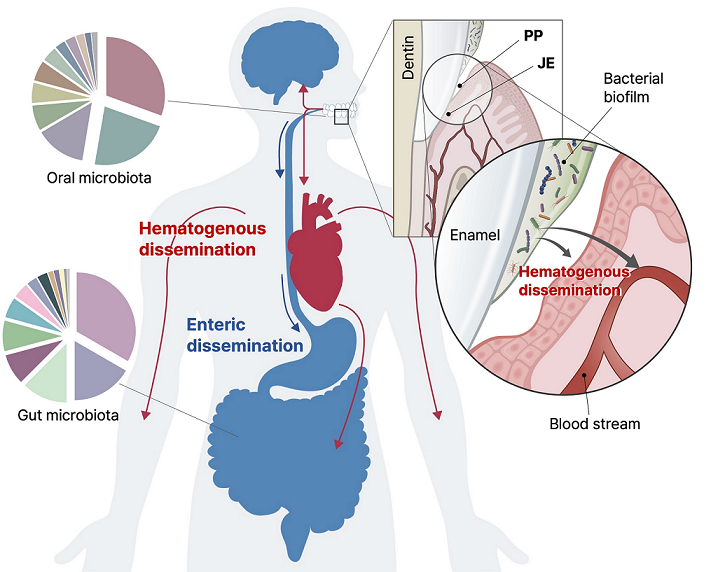The oral cavity is the gateway for microorganisms into your body where they disseminate not only to the directly connected respiratory and digestive tracts, but also to the many remote organs. Oral microbiota, traveling to the end of the intestine and circulating our body through blood vessels, not only affect a gut microbiome profile, but also many systemic diseases. By gathering information accumulated from the era of focal infection theory to the age of revolution in microbiome research, we propose a pivotal role of “leaky gum”, as an analogy of “leaky gut”, to underscore the importance of the oral cavity in systemic health. The oral cavity has unique structures, the gingival sulcus (GS) and the junctional epithelium (JE) below the GS, which are rarely found anywhere else in our body. The JE is attached to the tooth enamel and cementum by hemidesmosome (HD), which is structurally weaker than desmosome and is thus vulnerable to microbial infiltration. In the GS, microbial biofilms can build up for life, unlike the biofilms on the skin and intestinal mucosa that fall off by natural process. Thus, we emphasize that the GS and the JE are the weakest leaky point for microbes to invade human body, making the leaky gum just as important as, or even more important than, the leaky gut.

